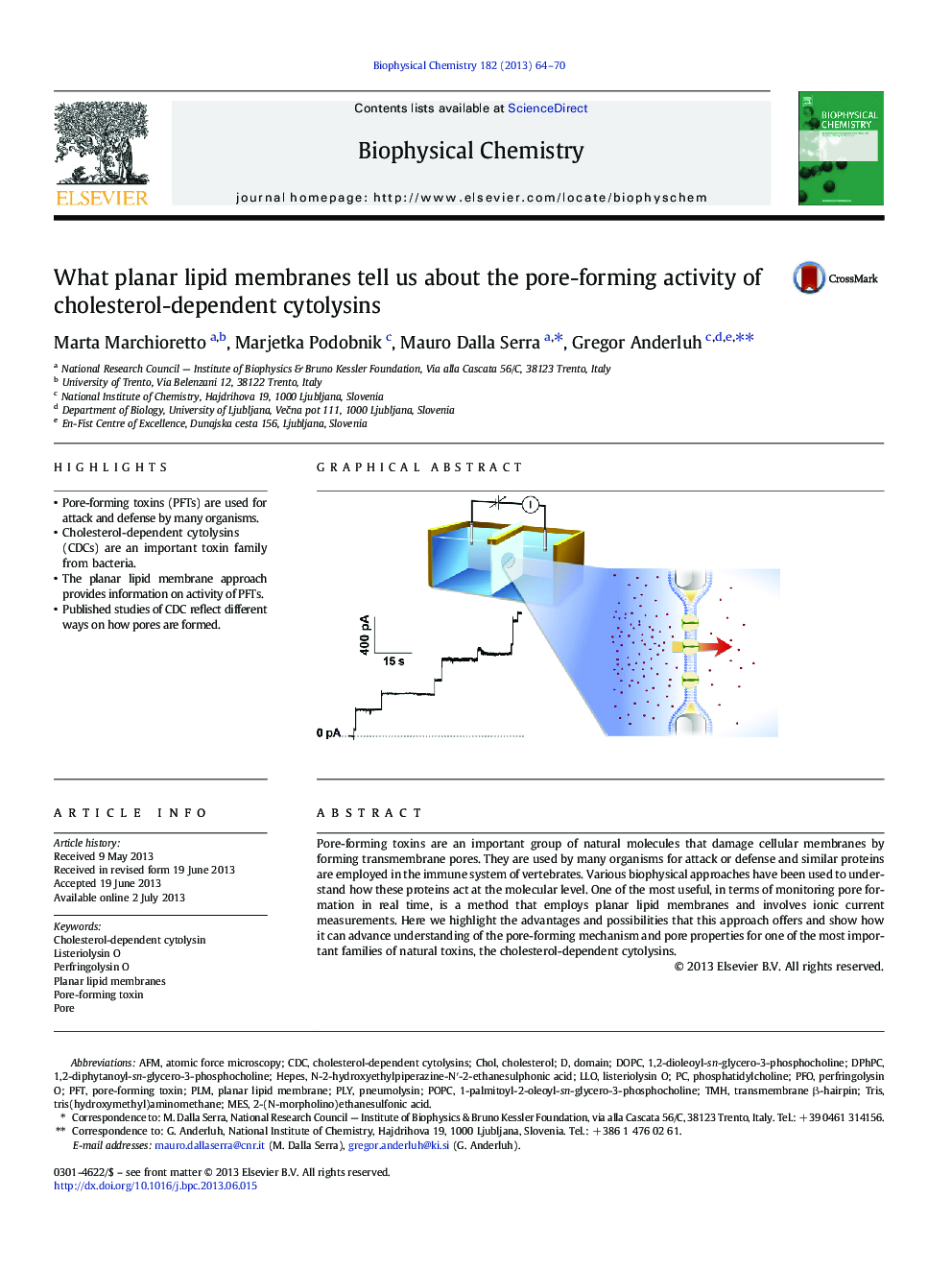| Article ID | Journal | Published Year | Pages | File Type |
|---|---|---|---|---|
| 5371111 | Biophysical Chemistry | 2013 | 7 Pages |
â¢Pore-forming toxins (PFTs) are used for attack and defense by many organisms.â¢Cholesterol-dependent cytolysins (CDCs) are an important toxin family from bacteria.â¢The planar lipid membrane approach provides information on activity of PFTs.â¢Published studies of CDC reflect different ways on how pores are formed.
Pore-forming toxins are an important group of natural molecules that damage cellular membranes by forming transmembrane pores. They are used by many organisms for attack or defense and similar proteins are employed in the immune system of vertebrates. Various biophysical approaches have been used to understand how these proteins act at the molecular level. One of the most useful, in terms of monitoring pore formation in real time, is a method that employs planar lipid membranes and involves ionic current measurements. Here we highlight the advantages and possibilities that this approach offers and show how it can advance understanding of the pore-forming mechanism and pore properties for one of the most important families of natural toxins, the cholesterol-dependent cytolysins.
Graphical abstractDownload full-size image
